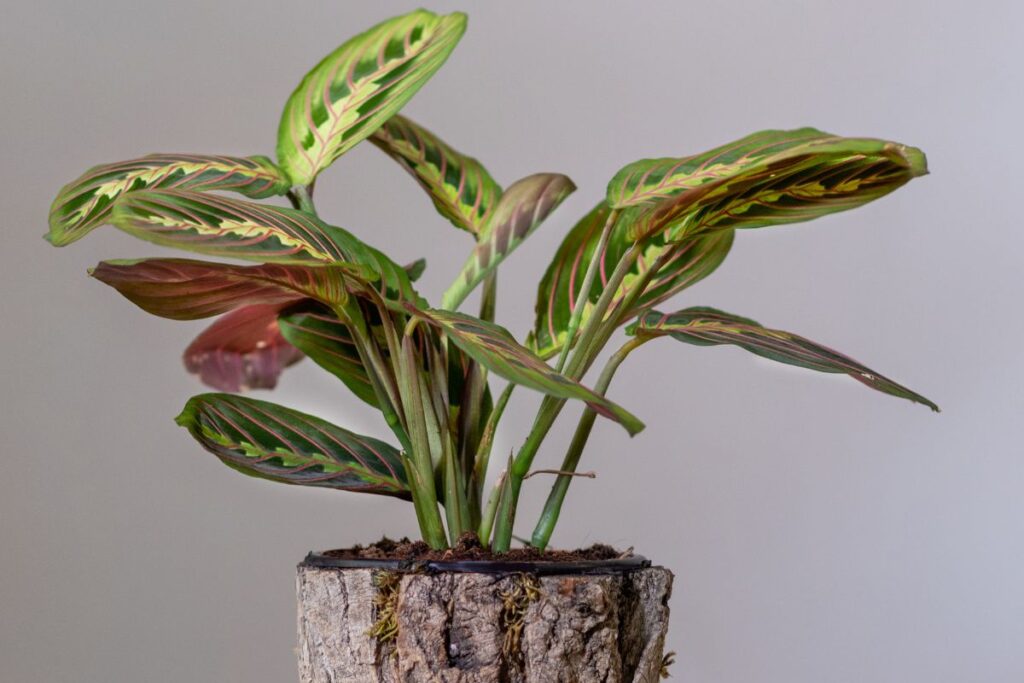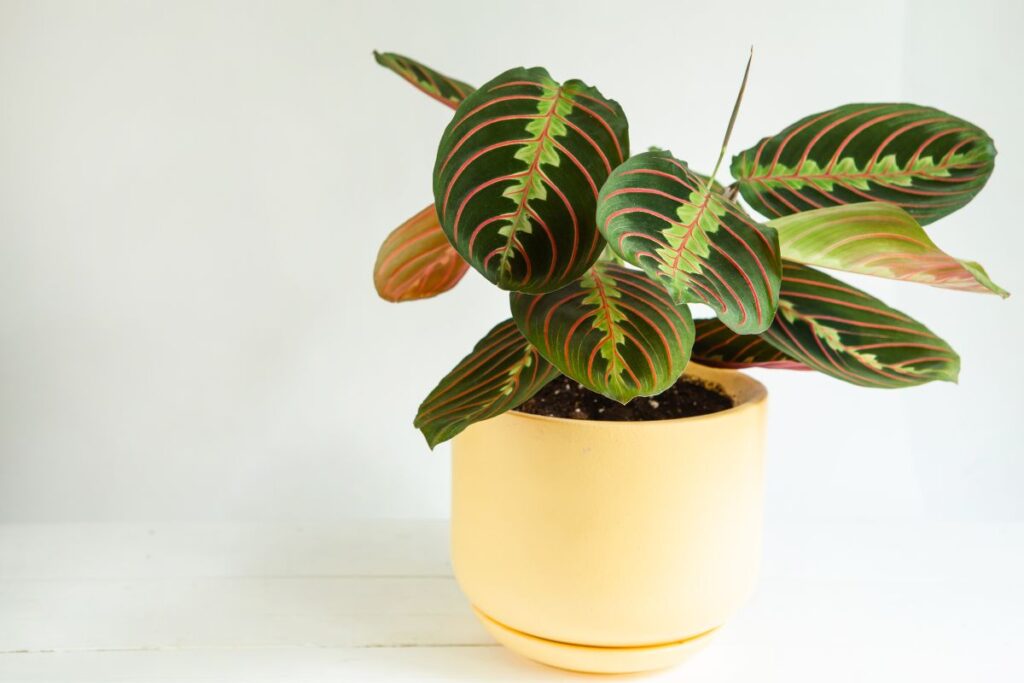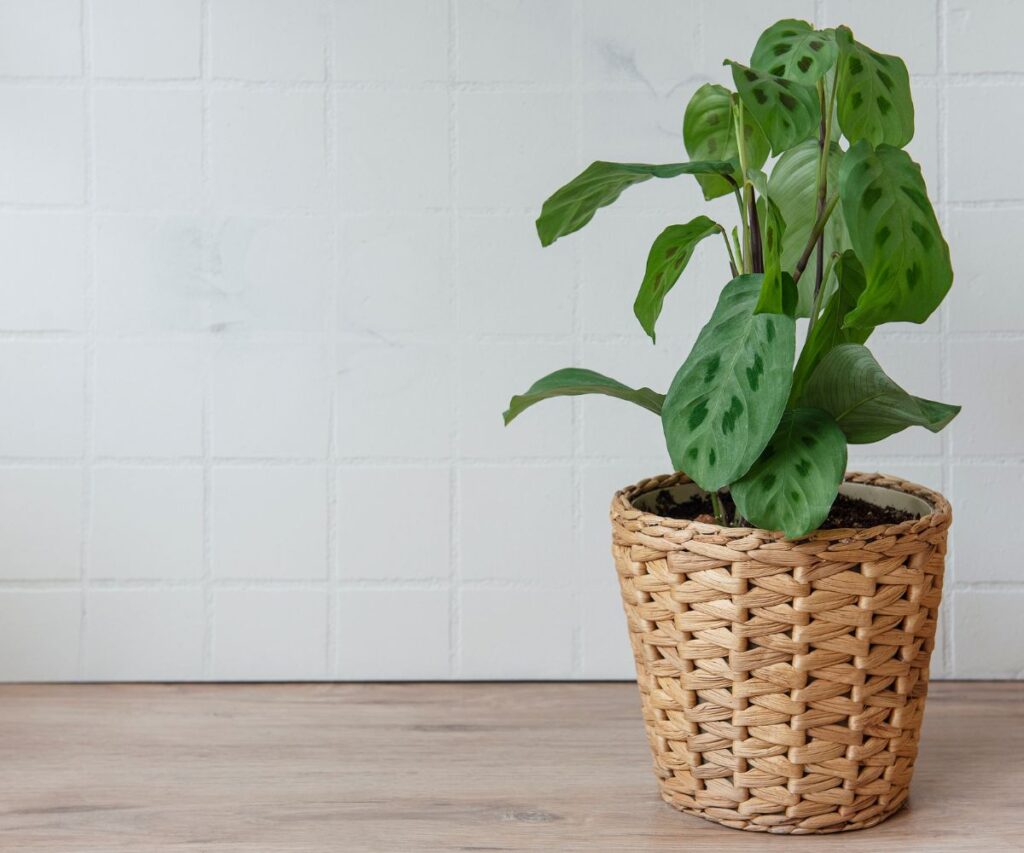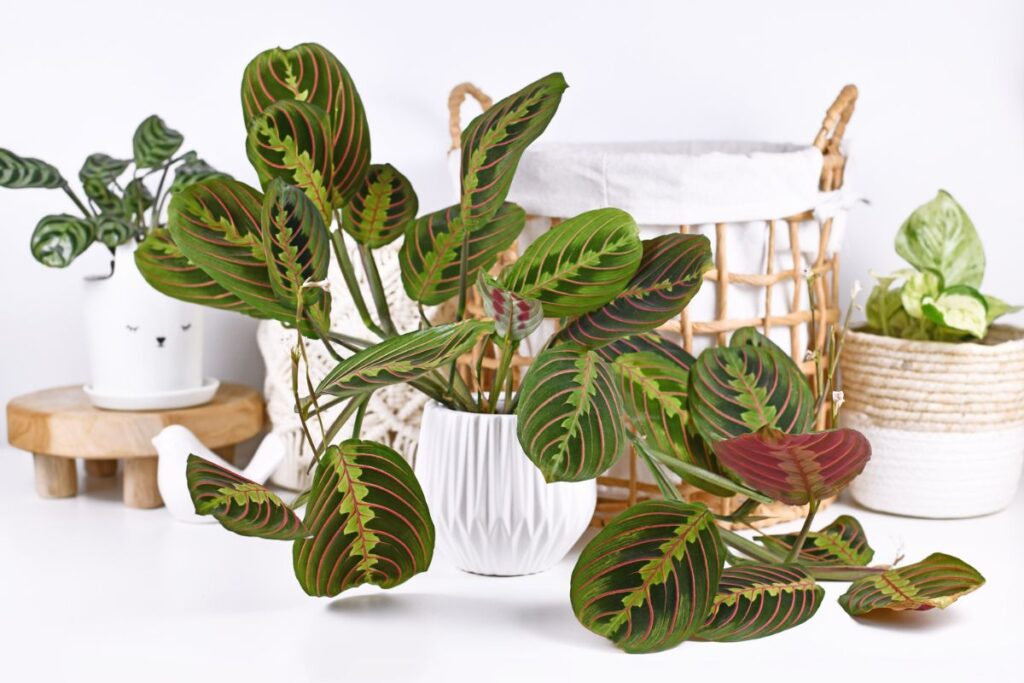Have you ever seen a prayer plant and wondered why it moves? It’s an intriguing phenomenon that many people have noticed. I know when I first saw one, I was mesmerized by its graceful motion and wanted to understand what caused it.

In this article, we’ll explore the science behind why prayer plants move in order to better understand their behavior. The movement of these plants may seem mysterious at first, but there is actually a scientific explanation for why they do so.
We will look at the biology of the plant to gain insight into how and why the leaves of a prayer plant curl up each day. By understanding more about this process, we can appreciate these fascinating plants even more!
Contents
How Do Prayer Plants Move?
Prayer plants are a unique type of houseplant that has a fascinating way of moving.
It is caused by a combination of photosynthesis effects, humidity levels, and plant physiology.
During the day, when exposed to strong light intensity, the leaves will open up in a downward motion.
At night or in low-light conditions, the leaves will close back up again as if they were praying.
This movement also helps the plant conserve its energy and water reserves during dry times.

Why Do Prayer Plants Move?
Prayer plants are unique in that their leaves move and fold throughout the day. This movement is due to two natural processes: phototropism and circadian rhythms.
Phototropism refers to a plant’s response to light intensity, causing it to grow or reach towards sources of light. Circadian rhythms refer to internal clocks inside organisms that cause them to respond biologically at certain times of the day. In prayer plants, these responses manifest through leaf movements.
The structure of prayer plant leaves also contributes to their movement; they have lightweight stems with flexible joints that allow for easy folding when exposed to different environmental factors such as humidity levels or changes in light intensity during the day.
By responding naturally to external conditions, prayer plants can both conserve energy and adjust positions so they receive optimal amounts of sunlight throughout the day. As such, this adaptation allows prayer plants to flourish in diverse environments.
When Do Prayer Plants Move?
Prayer plants are fascinating for their ability to move in response to the environment around them. This movement is called a ‘sleep-wake cycle’ and it’s caused by light sensitivity, water availability, air temperature, and humidity levels being just right for the plant.
The prayer plant has evolved this circadian rhythm so that when conditions aren’t ideal—like during the night or when there’s not enough moisture—it folds its leaves up close together as if praying.
Then during the day, if all these environmental factors are met with optimal levels of sunlight, water, air temperature, and humidity then they’ll open back up again. It’s an amazing adaptation that helps protect the plant from harm.

Why Doesn’t My Prayer Plant Move?
There could be a few reasons why your prayer plant is not moving or showing its characteristic daily movements of raising and lowering its leaves. The most common reason for this is inadequate lighting.
Prayer plants need bright, indirect light to thrive and exhibit their movements. If the plant is placed in a spot with low light, it may not receive the necessary light cues to trigger its daily movements. Consider moving the plant to a brighter location near a window, but avoid direct sunlight as it can scorch the leaves.
Another reason could be improper watering or humidity levels. Prayer plants are native to tropical environments and require consistent moisture and high humidity to thrive. If the soil is too dry or the humidity around the plant is too low, it can cause stress, leading to reduced or halted movements.
Ensure that you are watering the plant regularly and maintaining evenly moist soil, without letting it sit in standing water. To increase humidity, you can place the plant on a tray filled with water and pebbles or group it with other humidity-loving plants.
Additionally, check for any signs of pests or diseases that could be preventing the plant from moving.
If none of these factors seem to be the issue, it is possible that your plant simply needs some time to acclimate to its environment, especially if it is a new addition to your home. Give it some time, and with proper care, your prayer plant should eventually start to exhibit its unique movements.
Prayer Plants FAQ
Do prayer plants go to sleep?
Yes, prayer plants (Maranta leuconeura) exhibit a fascinating behavior, often referred to as “going to sleep” or nyctinasty. This phenomenon occurs in response to the daily light cycle, where the plant’s leaves fold upwards, resembling hands in a prayer position, during the evening or nighttime. This movement is a result of changes in the cells at the base of the leaves, which are triggered by light and temperature.
During the day, when the sunlight is abundant, the leaves of the prayer plant spread out horizontally to maximize their exposure to light, which is essential for photosynthesis. As the sun sets and darkness approaches, the leaves gradually move upwards and close together, giving the appearance that the plant is going to sleep. This nightly movement is believed to help the plant conserve water and protect it from cooler nighttime temperatures.
Once the morning light returns, the leaves slowly unfold, resuming their daytime position. This daily “sleep” cycle is one of the unique characteristics that make prayer plants a popular choice among houseplant enthusiasts.
Why are my prayer plant leaves not standing up?

There could be several reasons why your prayer plant leaves are not standing up. One common issue is insufficient lighting. Prayer plants thrive in bright, indirect light, and if they are not receiving adequate light, their leaves may droop or not stand up as they should. Make sure your plant is placed near a window that receives plenty of indirect sunlight, but avoid direct sunlight as it can scorch the leaves.
Another possible reason is improper watering. Prayer plants prefer consistently moist soil, but they do not tolerate being overwatered or sitting in soggy soil. Overwatering can lead to root rot, which can cause the leaves to droop or not stand up. Make sure you are watering your plant regularly but allowing the top layer of soil to dry out slightly between waterings. Additionally, ensure that your plant is in a well-draining pot to avoid waterlogged soil.
Other factors that can affect your prayer plant’s leaves include humidity, temperature, and nutrient deficiencies. Prayer plants thrive in humid environments, so if your home is too dry, consider using a humidifier or placing a tray of water near the plant to increase humidity. These plants also prefer temperatures between 65-80°F (18-27°C), so make sure your plant is not exposed to extreme temperatures or drafts. Lastly, a lack of essential nutrients can cause the leaves to droop or not stand up properly. Ensure that you are feeding your prayer plant with a balanced, water-soluble fertilizer every 4-6 weeks during the growing season to provide the necessary nutrients.
Are prayer plants supposed to hang?
Prayer plants (Maranta leuconeura) are not typically considered hanging plants, but they can be placed in hanging baskets for a unique and beautiful display. These plants are known for their stunning foliage, with beautiful patterns and shades of green, red, and purple. The leaves of prayer plants fold up at night, resembling hands in prayer, giving the plant its common name.
When placed in a hanging basket, prayer plants can create a lush, trailing effect as their stems and leaves cascade over the sides of the container. This can add visual interest and a pop of color to your home or garden. However, it is essential to ensure that the plant receives the proper care, including bright, indirect light, moisture, and humidity, to thrive in a hanging position. Additionally, regular pruning and maintenance will be necessary to maintain the plant’s shape and prevent it from becoming too leggy or overgrown.
Overall, while prayer plants are not specifically designed to be hanging plants, they can be successfully grown in hanging baskets with the proper care and attention.
Do prayer plants creep?

Yes, prayer plants (Maranta leuconeura) are known for their creeping growth habit. These plants are native to the tropical regions of Central and South America, where they grow low to the ground in the understory of forests. The term “creeping” refers to the way prayer plants grow, as they spread horizontally across the ground by producing new shoots and leaves from their shallow roots.
Do prayer plants like the dark?
Prayer plants do not necessarily prefer the dark, but they can tolerate low-light conditions. However, for optimal growth and healthy foliage, they thrive best in bright, indirect sunlight. Direct sunlight can cause scorching of the leaves, while not enough light may lead to leggy growth and dull colors.
In their natural habitat, prayer plants grow on the forest floor under the shade of larger plants. They are accustomed to receiving dappled sunlight filtered through the canopy above. As such, prayer plants are well-suited for indoor environments with low to moderate light levels, such as rooms with north-facing or partially shaded windows.
It is important to provide consistent light exposure throughout the day, as sudden changes in light conditions can cause stress to the plant. Additionally, rotating the plant occasionally will ensure that all parts of the plant receive an equal amount of light, promoting even growth and preventing the plant from becoming lopsided.
Overall, while prayer plants can adapt to lower light conditions, they will flourish best when provided with a consistent source of bright, indirect light.
Do prayer plants shake?
Prayer plants do not exactly “shake,” but they exhibit a fascinating movement called nyctinasty. This movement, which may appear as a shaking or quivering motion, is a natural response to changes in light levels. During the day, the leaves of the prayer plant spread out to absorb sunlight, and at night, they fold up vertically, resembling hands folded in prayer. This is where the plant gets its name.
The folding and unfolding of the leaves are not sudden jerky movements but rather a slow, gentle process that can be observed over time. The movement is driven by changes in the turgor pressure within the plant’s cells, which cause the leaves to rise and fall. This unique behavior may serve several purposes, such as minimizing water loss during the night, protecting the plant from herbivores, or maximizing light absorption during the day. While it may seem as if the prayer plant is shaking, it is actually just adjusting its leaves in response to its environment in a beautiful, rhythmic dance of nature.
Conclusion
The mysterious movement of the prayer plant has fascinated us for many years. We now know that these plants move in response to changes in light and temperature, but there may be other factors at work as well.
As you care for your own prayer plant, observe it closely and you’ll likely see its unique movements each day. You might even get a glimpse into its secret life!
